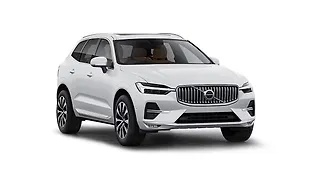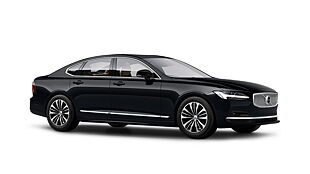Why would I buy it?
- Strong performance
- Cabin quality
- Claimed range
Why would I avoid it?
- Poor value compared to dual-motor version
- Firm ride
What is it?

With a top-down approach, this is a more affordable, less powerful, smaller battery and a single-motor version of the XC40 Recharge. Priced at Rs 54.95 lakh, it is available in a new Pure variant which is also aptly called “Single”. With a reduced battery size, the claimed range is also slightly down while the power is almost half of the P8 AWD trim. But was there a need for this XC40 Recharge Single, when the price difference between this and the bigger, faster version isn’t significant? Let’s find out.

The telltale sign of this being the Single variant is the omission of front fog lamps which looks pretty odd as a blank on the fascia. Although the Thor hammer headlamps are present with the new facelifted design, it does miss out on the Pixel LED headlamps. It also rides on simple-looking 19-inch alloy wheels wrapped in Pirelli tyres. We are also a fan of this rather smartly finished ‘bright dusk’ paint job on our test car. Otherwise, there’s no way of visually differentiating this RWD XC40 from the P8 AWD version.

Is the cabin of the XC40 Recharge Single any good?

Although the cabin layout remains unchanged over the flagship variant, the Pure variant does miss out on a few feel-good features to keep the cost down. These missing features include the aforementioned Pixel LED headlamps apart from a 360-degree camera, park assist, powered child safety lock, and Harman Kardon music system with a sub-woofer. You do get two choices for the cabin theme – black on black or a very typical Volvo style of black with Fjord Blue. It uses the same suede/Microtech upholstery which is recycled yet feels very premium.

Being an all-black cabin does make the electric XC40 feel more cramped than it is. This being an EV, we have come to expect more space inside the cabin and some contemporary design elements like an empty centre console. For instance, the direct rival BMW iX1 has a floating centre console which makes the cabin feel more spacious and futuristic. However, Volvo has decided to stick to its simple setup for the dashboard which continues to have an integrated nine-inch vertically stacked touchscreen flanked by air-con vents. The only contemporary elements inside are those topography inlays running across the dash and doors which look and feel quite fantastic.

The quality of plastic and other materials inside the cabin does feel like they are built to last. Adding to the in-cabin feel are the large and supportive seats which do get an electric adjustment but no ventilation which is a bummer. But proper bolstering makes these seats feel comfortable for spending long hours in. It’s the back seat which feels a bit awkward with limited under-thigh support and a very narrow door width to get in. There’s also a big transmission tunnel on the floor and a protruding AC vent which makes the back bench a best fit for two.

Even the bootspace at 419 litres is significantly less than what you get in the direct rival, the BMW iX1 (490 litres). However, both the iX1 and this XC40 Recharge have their bootspace eaten up by a spare wheel placed in the boot. But where the iX1 doesn’t offer any, the XC40 electric gives you 31 litres of frunk space which is large enough for a weekend duffle bag.
Is the XC40 Recharge Single good to drive?

This Pure variant now has a smaller 69kWh battery pack compared to the 78kWh unit available in the P8 trim. With a motor eliminated, the power output is also down to 236bhp and 420Nm as compared to 401bhp and 660Nm. As a result, the 0-100kmph time has gone up from 4.9 seconds to 7.3 seconds now. However, 7.3 seconds is no slouch by any standard.

The Single still retains its quick acceleration but in comparison, it's not as maniacal as the AWD. It's more of a gentle tug instead of a punch in your gut. It makes the everyday drivability much more relaxed and comfortable as opposed to the urgent nature of the AWD. Even if you are slightly less gentle with the throttle, the momentum gained is gradual and the speed mounts up in a linear manner effortlessly (as expected from an EV). Like the powerful version, there are no drive modes here either. But you do get a proper one-pedal setup, which once you get used to, is one of the best ones you’d find in the EVs sold here in India.

There are no significant changes done to the steering setup as well as the suspension for this RWD version. It rides on 235/50 section Pirelli tyres wrapped around 19-inch alloy wheels and has an underlying firmness to the way it takes our cemented roads. Those sharp road joints and creases are felt prominently inside the cabin. But on the upside, it feels equally planted at highway speeds. It even manages to flat out some of the ungainly irregularities when carrying higher speeds.

Moreover, the steering remains light and quick. It’s very direct as well which makes maneuvering the XC40 around town a very comfortable affair. You can make the steering feel a tad bit heavy by finding a control deep inside the touchscreen. Since the power is sent to the rear wheels, the front sometimes feels too light when accelerating hard. And if you try to go hard on the throttle while being way into a corner, it will tend to oversteer. But since there’s not a lot of horsepower to play around with a rather heavy car, it won’t be as scary an experience.

Sure, it could be slightly more engaging to drive with a little more character. But otherwise, the XC40 Recharge with its RWD setup makes for a very docile and comfortable runabout. Be it for intercity or intracity travel. Talking about that, the Single variant has a higher claimed range of around 475kms (under WLTP). We weren’t able to carry out a proper real-world range test, but our experience with another electric Volvo, the C40 Recharge, tells us that it would do really close to its claimed figures in real-world conditions.
Should you buy the Volvo XC40 Recharge Single?

Now this lower-spec Single trim of the Volvo XC40 Recharge is not significantly more affordable than the powerful and outrageous P8 trim. It’s around 3 lakh rupees less expensive, for which the only upside is that you get a car which won’t give you a heart attack every time you go hard on the accelerator pedal.

Sure, the elimination of some important and feel-good features was unnecessary as this price difference between the two variants only justifies the elimination of the second motor. And for someone looking to invest around Rs 60 lakh rupees (on-road, Mumbai), the difference of a couple of lakh won’t be a big deal breaker. But the Single in itself makes for a more sensible buy. It’s well suited for everyday usability and still has the same ‘seal’ of approval that every Volvo comes with.
Pictures by Kapil Angane and Kaustubh Gandhi



![Volvo XC40 Recharge [2022-2024] Right Front Three Quarter Volvo XC40 Recharge [2022-2024] Right Front Three Quarter](https://imgd.aeplcdn.com/642x361/n/cw/ec/174487/volvo-xc40-recharge-right-front-three-quarter0.jpeg?isig=0&wm=1&q=80)
![Volvo XC40 Recharge [2022-2024] Right Front Three Quarter Volvo XC40 Recharge [2022-2024] Right Front Three Quarter](https://imgd.aeplcdn.com/642x361/n/cw/ec/174487/volvo-xc40-recharge-right-front-three-quarter16.jpeg?isig=0&wm=1&q=80)
![Volvo XC40 Recharge [2022-2024] Right Front Three Quarter Volvo XC40 Recharge [2022-2024] Right Front Three Quarter](https://imgd.aeplcdn.com/642x361/n/cw/ec/174487/volvo-xc40-recharge-right-front-three-quarter15.jpeg?isig=0&wm=1&q=80)
![Volvo XC40 Recharge [2022-2024] Right Front Three Quarter Volvo XC40 Recharge [2022-2024] Right Front Three Quarter](https://imgd.aeplcdn.com/642x361/n/cw/ec/174487/volvo-xc40-recharge-right-front-three-quarter6.jpeg?isig=0&wm=1&q=80)
![Volvo XC40 Recharge [2022-2024] Right Side View Volvo XC40 Recharge [2022-2024] Right Side View](https://imgd.aeplcdn.com/642x361/n/cw/ec/174487/volvo-xc40-recharge-right-side-view5.jpeg?isig=0&wm=1&q=80)
![Volvo XC40 Recharge [2022-2024] Right Side View Volvo XC40 Recharge [2022-2024] Right Side View](https://imgd.aeplcdn.com/642x361/n/cw/ec/174487/volvo-xc40-recharge-right-side-view14.jpeg?isig=0&wm=1&q=80)
![Volvo XC40 Recharge [2022-2024] Right Side View Volvo XC40 Recharge [2022-2024] Right Side View](https://imgd.aeplcdn.com/642x361/n/cw/ec/174487/volvo-xc40-recharge-right-side-view13.jpeg?isig=0&wm=1&q=80)
![Volvo XC40 Recharge [2022-2024] Image Volvo XC40 Recharge [2022-2024] Image](https://imgd.aeplcdn.com/272x153/n/cw/ec/51766/xc40-recharge-exterior-right-front-three-quarter-2.jpeg?isig=0&q=80)























